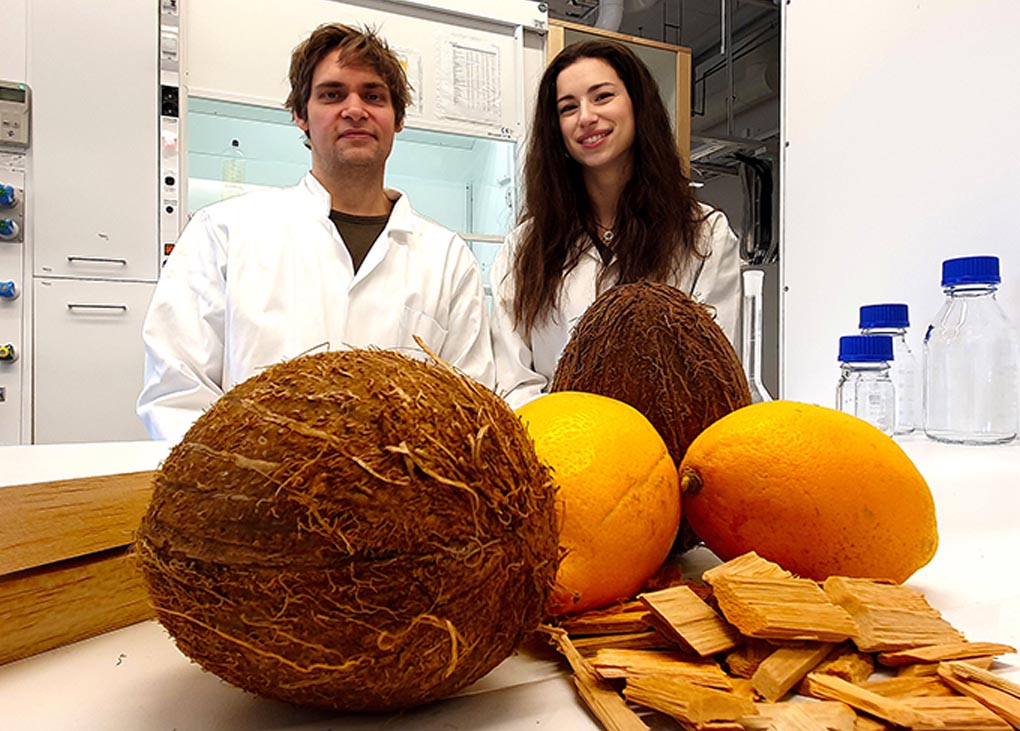Researchers in Stockholm, Sweden have developed an eco-friendly material that they say can be used to cool and even heat homes.
The team of researchers at the KTH Royal Institute of Technology – Sweden’s largest technical university – used coconuts, lemons, and modified wood, to create a “wood composite thermal battery.”
According to the research study, when used in housing construction, the material is capable of capturing both heat and cold. Given an ambient temperature of 24°C, the team estimated that 100kg of the material can save about 2.5kWh per day in heating or cooling.
The process begins with removing lignin from wood, which opens pores in the material and makes the wood transparent. The gaps are then filled with citrus (limonene acrylate) and coconut-based molecules.
Céline Montanari, one of the authors of this study, says when heated, limonene acrylate molecules transform into a bio-based polymer, restoring the wood’s strength and allowing light to permeate. As a result, the coconut molecules can become trapped inside the material, facilitating energy storage and release.
Montanari says that the coconut molecules can transition from a solid to liquid, which absorbs energy; or from liquid to solid, which releases energy, in much the same way that water freezes and melts. This transition method can heat or cool the immediate surroundings as needed.
Fellow researcher Peter Olsén suggests the material could also be used for greenhouses.
“When the sun shines, the wood becomes transparent and stores more energy, while at night it becomes cloudy and releases the heat stored during the day,” Olsén says. “That would help reduce energy consumption for heating and at the same time provide improved growth.”
The study notes that sustainable development of functional energy-saving building materials is important for reducing thermal energy consumption and promoting natural indoor lighting.
“Phase-change materials embedded in wood-based materials are candidates for thermal energy storage,” the study says. “However, the renewable resource content is usually insufficient, the energy storage and mechanical properties are poor, and the sustainability aspect is unexplored.
“Here, a novel fully bio-based transparent wood biocomposite for thermal energy storage, combining excellent heat storage properties, tunable optical transmittance, and mechanical performance is introduced.
“[The material] holds great potential as scalable and sustainable transparent heat storage solution.”
More information is available at the KTH Royal Institute of Technology website.
Image shows Peter Olsén and Céline Montanari, researchers in the Department of Biocomposites at KTH Royal Institute of Technology in Stockholm. Photo: David Callahan courtesy of KTH Royal Institute of Technology.
 Louise Belfield
Louise Belfield


Leave a Reply